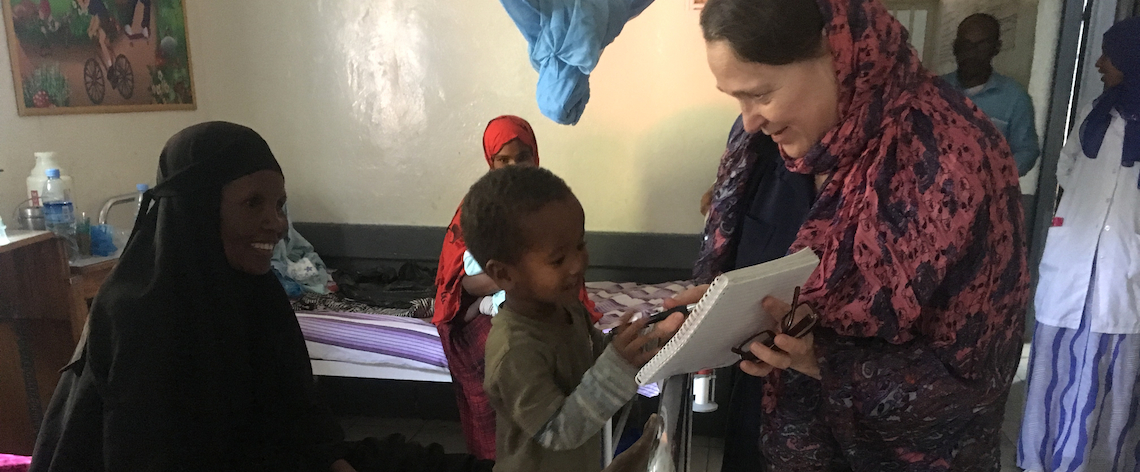PART 2: INSIDE THE CHILD HUNGER CRISIS WITH PATRICIA ERB, OUR PRESIDENT AND CEO
Last week I wrote about my recent trip to Somaliland and the impact that drought and food crises is having on children, families and their livestock. At another stop on our journey, we visited some mobile health clinics. Seeing these programs in action generates a sense of what we can achieve, however with the crisis deepening, the mood is somber. At a clinic stop, children were measured and weighed to determine their nutritional status. Those with moderate malnutrition were moved to the next phase, where mothers received support in the form of advice, follow up appointments were scheduled, and nutritional supplements were provided. Another corner was set up so that medically trained staff could treat other problems and issues, such as disease. We heard the fear that cholera and measles – present in other parts of the country – might appear and also cause death here.
These mobile clinics refer serious cases – those in severe malnutrition – to stabilization centres. Since January, these centres have started to receive a greater influx of patients. Under the fragility of a food crisis, mothers are forced to weigh the consequences of leaving their stronger children behind as they bring their weaker, seriously ill children to a stabilization centre – a choice no one should have to make. The distinction between strong and weak becomes less and less clear as a food crisis continues. The distance is often far and the journey challenging as too frequently there is no food or water along the way. The trek to the medical centre gets postponed in many cases.

There is nothing more heartbreaking to see than a child suffering severe malnutrition. I will never be able to forget their tiny, thin arms, unresponsive eyes, and this preventable loss of life. We owe the world’s children better than this. This is what we all committed to avoid again after the famine of 2011 killed so many.
Save the Children is doing all it can to avert this humanitarian crisis. But the need is increasing, and our ability to deliver life-saving aid to children and their families is limited. We have a small window of time to act and save lives, and we need you to help us do it.


